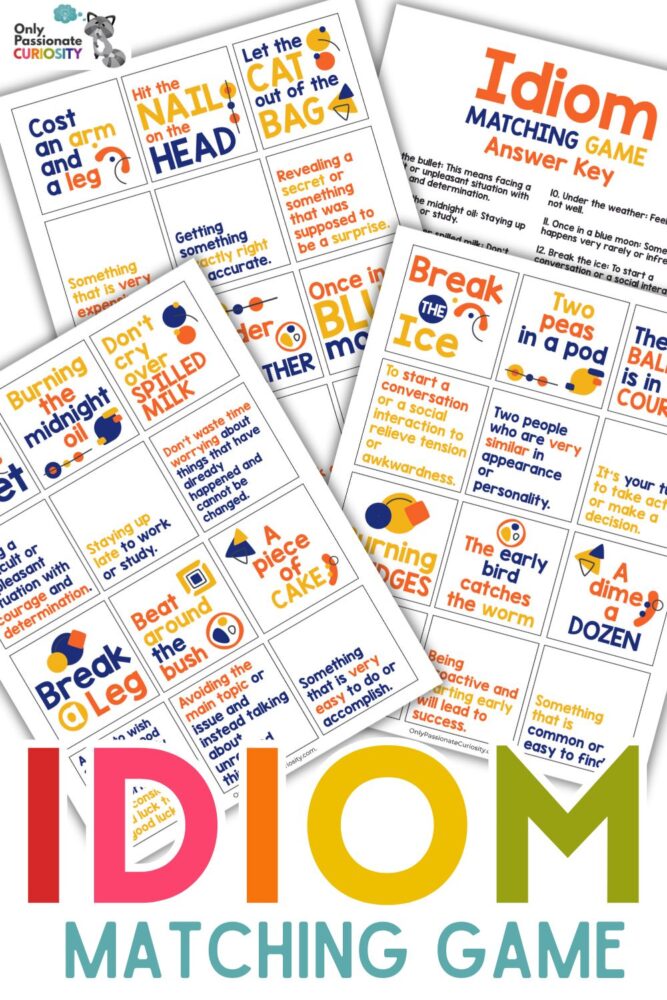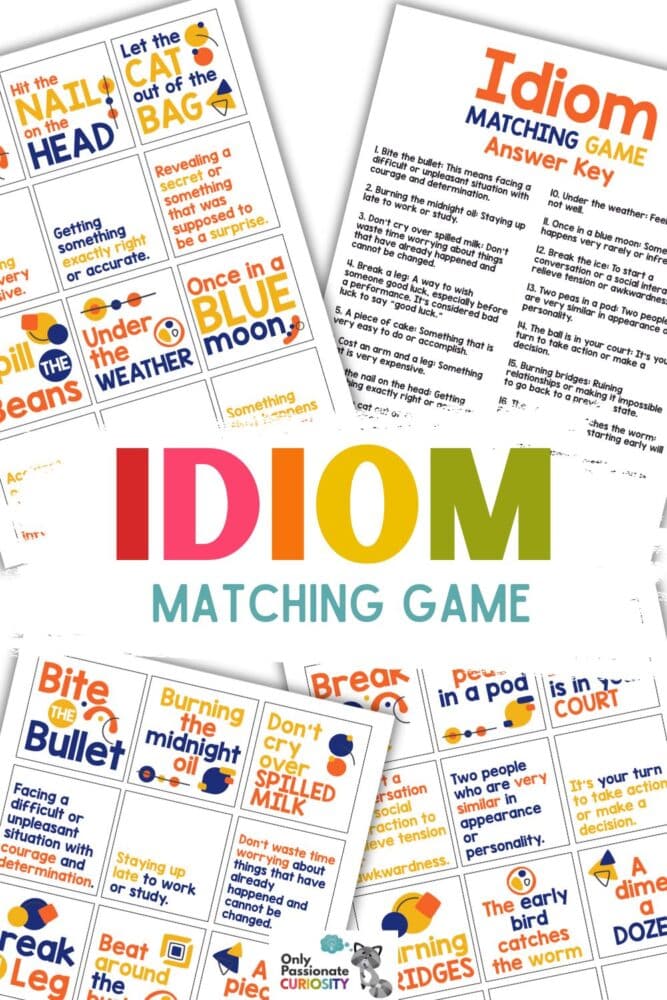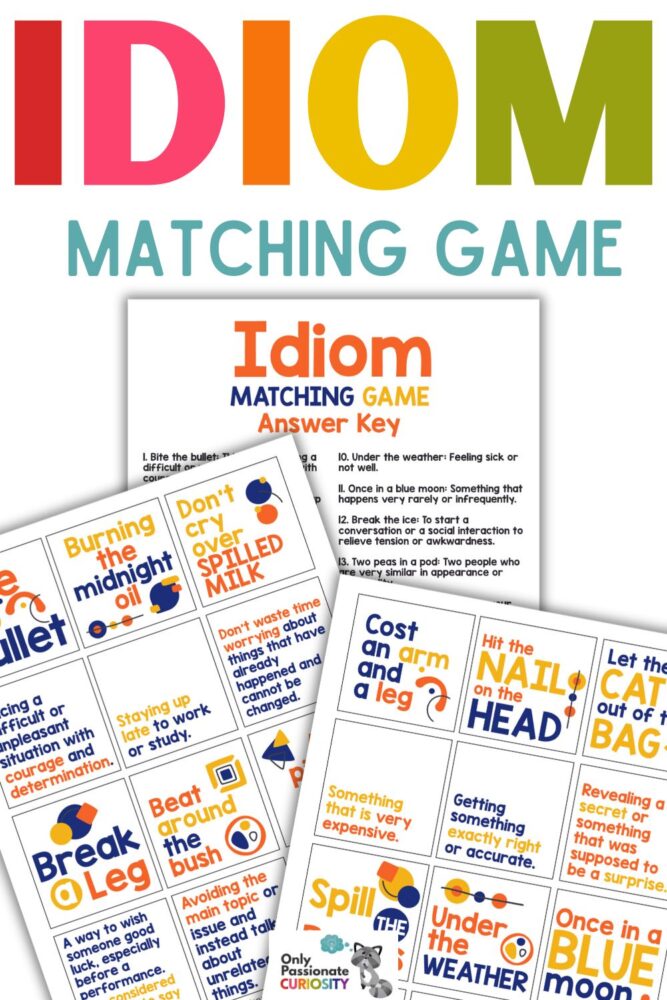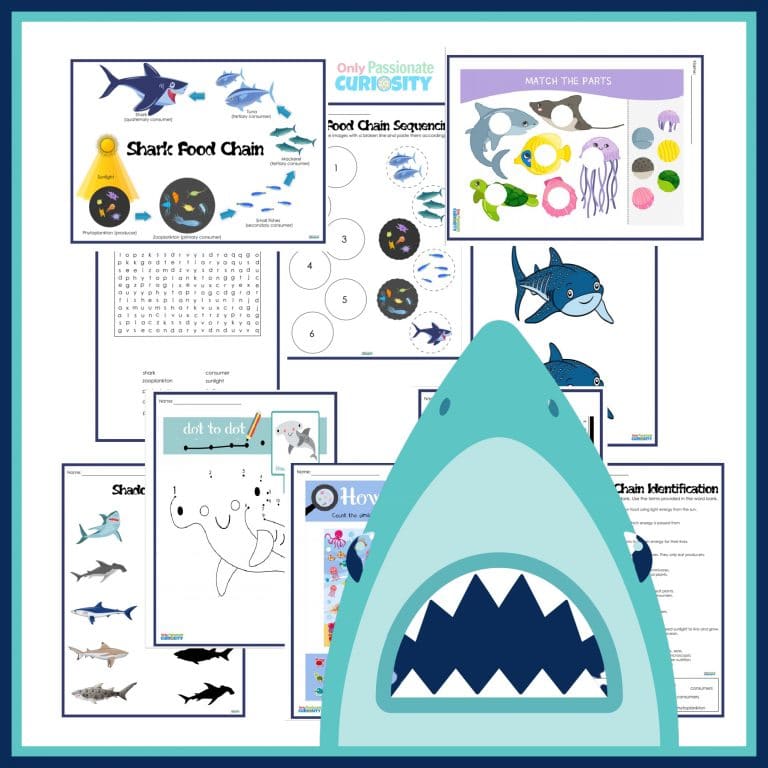Idiom Matching Game & All About Idioms for Kids
Do you ever feel like a fish out of water when it comes to explaining idioms to your kids? Don’t worry; you’re not alone! Teaching kids about idioms can be a fun experience and bring a few laughs to your homeschool day.
In this post, we’ll explore what idioms are, and their history, as well as share some examples. Plus, we’ve got a free printable: an idiom matching game to make your kids’ learning experience even more enjoyable!
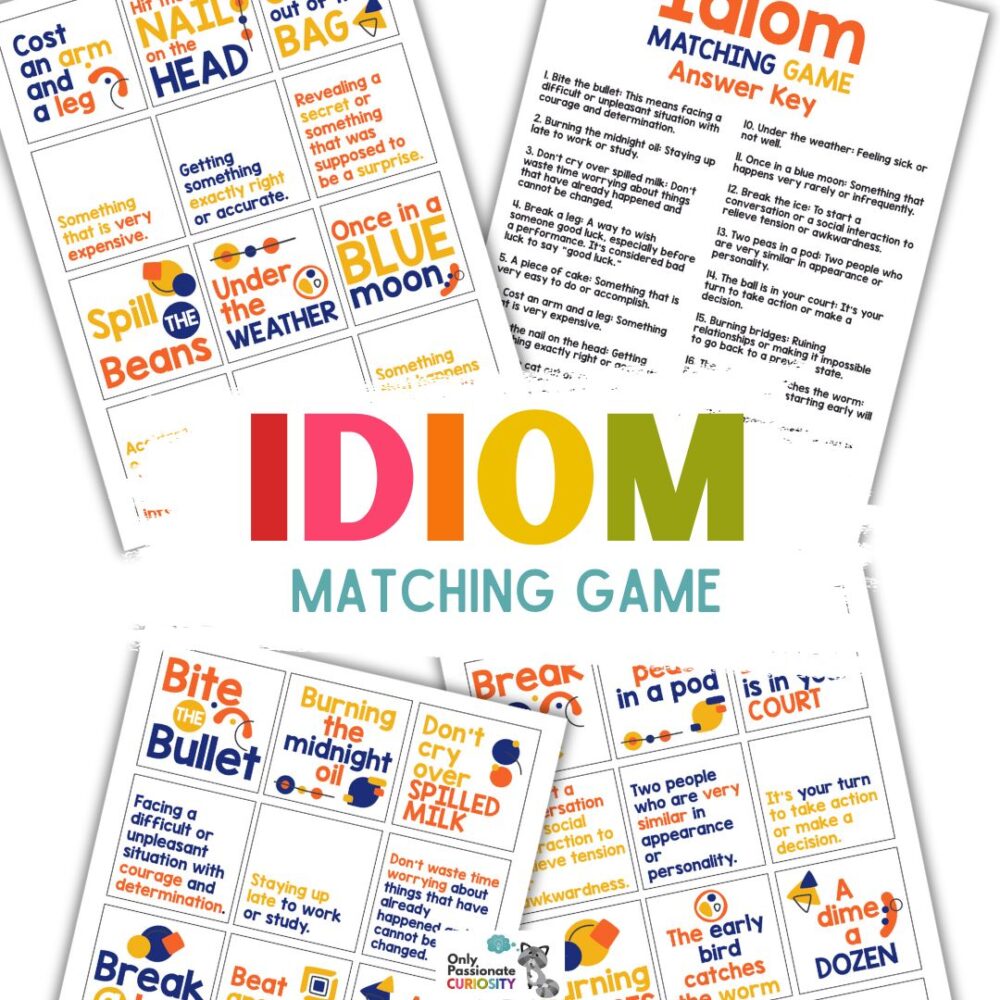
What Are Idioms?
Idioms are expressions that don’t mean exactly what the words say. Instead, they have a figurative or metaphorical meaning that is different from the literal interpretation. For example, when someone says, “It’s raining cats and dogs,” they don’t mean that animals are falling from the sky. They mean that it’s raining heavily.
This video can help you explain the concept to your kids in a fun way:
How Long Have People Been Using Idioms?
Idioms have been a part of language for centuries, dating back to ancient times. People have always used colorful phrases to express ideas and emotions more vividly and imaginatively. These unique phrases can vary greatly from language to language, adding to the richness and diversity of human communication. Older students might be interested in learning the origins of a few well-known idioms.
Here are a Few More Examples
- Break the ice: To make people feel more comfortable in a social situation.
- Hit the nail on the head: To describe someone who has said exactly the right thing.
- Bite the bullet: To bravely face a difficult or unpleasant situation.
Why Teach Kids About Idioms?
Understanding various forms of expression is essential for effective communication and language comprehension. By teaching your kids about these types of speech, you’re helping them become more fluent and expressive in their language skills. Plus, learning idioms can be a lot of fun and can spark curiosity about language and its origins.
The Idiom Matching Game
To make learning this concept even more enjoyable, we’ve created a free printable idiom matching game for kids. This game allows your children to find matching expressions and their meanings, and learn as they play.
You can download the game below.
Inspiring Curiosity Through Games
Using games in education is a great way to inspire curiosity and engage young learners. Games make learning fun and interactive, helping kids retain information more effectively. By playing games when teaching literature, language arts, and English to your kids, you’re not only teaching them about language but also fostering a love for learning.
There are a variety of apps you can find online that teach about this form of expression as well as about other fun phrases and types of speech in order to help your kids expand their vocabulary. You might need to try a few to find the one that works best for your homeschool needs.
Here are a couple of fun games that teach more about this concept, which you can purchase online (these are affiliate links):
Conclusion
Teaching your kids about various aspects of language and literature can be a rewarding experience that enhances their language skills and encourages curiosity. By exploring the fascinating world of the English language together, you’re helping your children become more confident and expressive communicators.
Here are some other articles and posts that can help you as you teach your kids more about forms of speech, communication, and language:
- 5 Fun Ways to Get Young Learners Thinking about Literature
- 10 Living Books for Preschoolers
- Free Literature Lessons, Activities, and Printables
- The Ultimate Homeschool Guide to Free Language Arts Resources
- Creative Ways to Use Comic Strips in High School Literature



